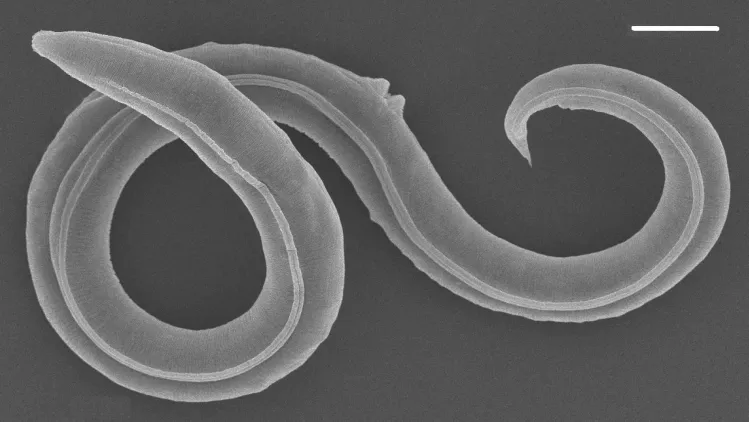Scientists have made a remarkable discovery in Siberia, where they found a microscopic worm that survived an astonishing 46,000 years in permafrost, setting a new record for the longest known survival of its kind. The worm, identified as Panagrolaimus kolymaensis, was found inside a fossilized squirrel burrow extracted near the Kolyma River in the Arctic back in 2002. It was successfully brought back to life in 2018, but its age and species were initially unknown.
In a recent study published in the journal PLOS Genetics, researchers shed light on this ancient nematode’s extraordinary feat. The worm entered a dormant state known as “cryptobiosis” during the late Pleistocene epoch, between 2.6 million and 11,700 years ago, which included the last ice age. In this state, the nematode drastically reduced its metabolic processes, including oxygen consumption and heat production, to almost undetectable levels, enabling it to survive for tens of thousands of years in frozen permafrost.
Other resilient organisms like tardigrades can also enter cryptobiosis in response to extreme environmental conditions, but this nematode’s survival sets a new standard for endurance. Until now, the record was held by two other nematode species: Plectus murrayi, which survived 25.5 years frozen in moss, and Tylenchus polyhypnus, which endured 39 years in a desiccated state.
To unravel the mechanisms behind the nematode’s survival, the researchers compared its genes to those of the well-studied roundworm Caenorhabditis elegans, the first multicellular organism to have its entire genome sequenced. They identified shared genes related to cryptobiosis, offering insights into how the worm endured its extended frozen slumber.
Further experiments revealed that trehalose, a sugar produced during anhydrobiosis (the process of extreme dehydration), likely played a key role in protecting the nematode’s cell membranes. This finding may explain how the worm sustained its resilience during its frozen hibernation.

Scientists revive a 46,000-year-old worm in Siberia
Overall, this discovery offers a fascinating glimpse into the incredible adaptability and survival strategies of life forms in extreme environments. The ancient nematode’s story has deepened our understanding of cryptobiosis and the potential for life to endure even under the most challenging conditions.
According to the researchers’ conclusions, nematodes have evolved with molecular pathways that enable them to cope with Arctic conditions, allowing them to survive in hibernating states for thousands of years. The study suggests that certain nematode species have adapted to enter cryptobiotic states for short periods in environments like permafrost, and over time, this adaptation has given them the potential to remain in such states for geological timeframes.
The implications of this adaptation are profound. It means that extinct nematode species, preserved in permafrost, could potentially be revived if they are released from their long hibernation. The researchers pointed out that significant environmental changes, such as fluctuations in temperature and natural radioactivity, could awaken ancient nematodes from their deep slumber.
This discovery opens up exciting possibilities for understanding the ancient history of these organisms and studying how life can endure extreme conditions over vast periods. It also highlights the resilience and adaptability of life forms in the face of environmental challenges. As researchers continue to investigate the secrets of cryptobiosis and its impact on various organisms, we may gain further insights into the potential for life to survive in extraordinary circumstances.
References: https://www.livescience.com/planet-earth/arctic/nematode-resurrected-from-siberian-permafrost-laid-dormant-for-46000-years
https://journals.plos.org/plosgenetics/article?id=10.1371/journal.pgen.1010798


Leave a Reply